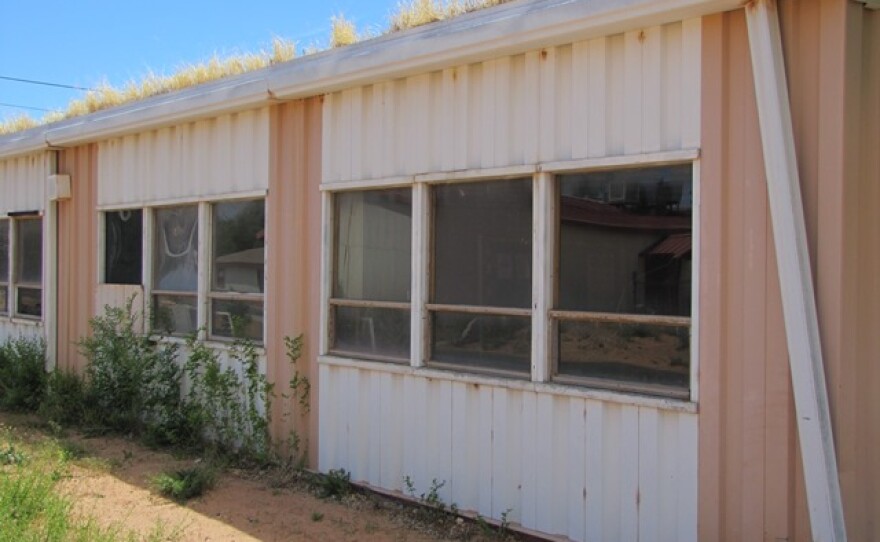Schools in Indian Country are starting to feel the effects of across-the-board federal budget cuts known as sequestration. For the Navajo Nation that means larger class sizes, putting off building repairs and fewer buses — which is a big deal in a place where children travel up to 70 miles to get to school.
Orson Bigman, the director of transportation for Tuba City schools, sits behind the wheel of a small school bus. He drives over what looks like an off-road trail for weekend warriors.
"Usually I tell my drivers take a little bit of a run at it," Bigman said as he slammed on the gas. "You can go over the sand dune."
Bigman said he drives six miles over sand dunes and rocks to get to two students’ bus stop. And on rainy days he may not get to them at all, because the road is washed out.
All of his drivers complain of back problems.

"As you can see I try to keep my body as stiff as I can kind of move along with the bumps," Bigman said.
And you can imagine what those bumps do to the buses, literally shaking the screws loose. Bigman said a bus that should last the district 10 years lasts five. And they don’t know if they will have the money to buy a new one next year.
School Superintendent Harold Begay would like to take a few members of Congress on this bus ride.
"The powers that be, lawmakers and so on, they don’t see this," Begay said. "They’ve never been out here."
Sequestration has already meant the loss of $60 million in federal Impact Aid for schools that serve American Indian children across the country. And administrators like Begay are anticipating more cuts next year.

Begay walked past the Tuba City High School gym where sun shines through the holes in the ceiling. At the nearby primary school one wing and a cafeteria have already been condemned. That building is in desperate need of new bathrooms and safe playground equipment. But those upgrades will have to wait.
On the playground Principal Sharlene Navaho watched the students enjoy their field day. A teacher yelled instructions through a bullhorn as students try to pass eggs to each other on paper plates. Navaho said the school has seven open positions due to attrition. But sequestration means she will have to leave those vacant.
"There’s going to be more responsibility placed on our teachers," Navaho said. "But I can see that I have a staff that’s going to not let that be the determining factor for our students."

Teachers said in addition to larger classes, they will have to buy scissors, crayons and other supplies themselves. Superintendent Begay said all this has a big effect on teachers’ attitudes.
"When you have an unreliable revenue flow, always being underfunded, to say that it hurts morale is putting it mildly," Begay said.
But Begay and a lot of people on the Navajo Nation said they’re used to doing more with less. It seems to be a reservation motto.
"You almost have to develop a pathological immunity to any kind of government funding, especially federal funding," he said.
Seventy percent of his students graduate, but Begay says many of them are not prepared to compete in the outside world. He has been working hard to change the low expectations of not just teachers but the whole community. But that’s especially hard to do with less federal funding.
Begay said one of the most important things they can teach children is resiliency — something people living in Indian Country have to learn the hard way.






